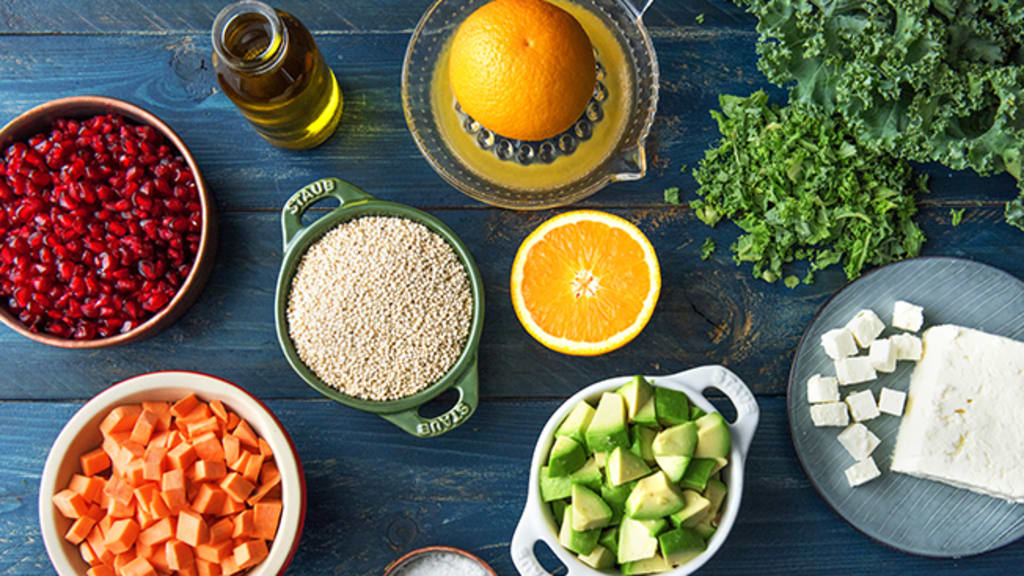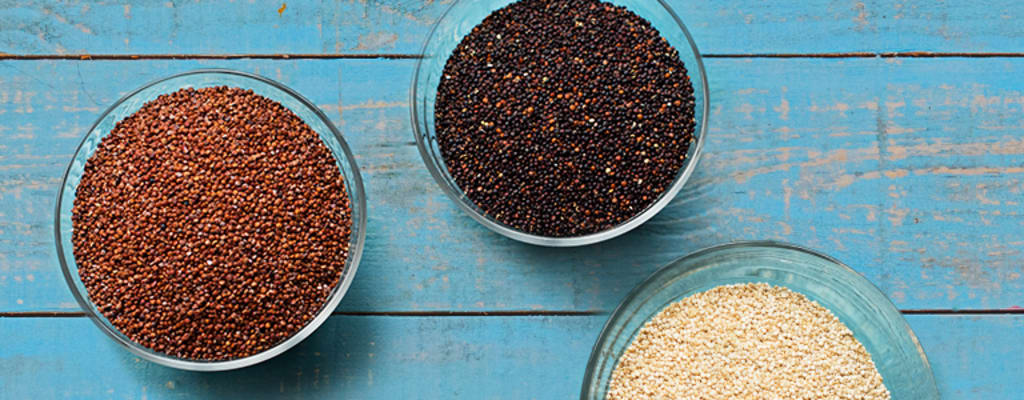Quinoa
Quinoa
Quinoa
Once touted as a trendy “superfood”, quinoa’s popularity has outlived its moment in the spotlight to become a culinary staple - with good reason!
QUINOA NUTRITIONAL INFORMATION & HEALTH BENEFITS
Quinoa may look like a grain, but it’s actually a type of seed known as a “pseudo-cereal”. Despite this, it is still classified as a “wholegrain” food, which means it is rarely processed, aids digestion, and is full of nutrients.
High in protein (4.4g per 185g) and fibre (1.8g per 185g), with a nutty flavour and crunchy texture, quinoa is an excellent gluten-free alternative to rice and pasta. 185g of cooked quinoa delivers 120 calories and 21.3g of carbohydrates, but is 27% water, which makes it filling without being too heavy or hard to digest.
Quinoa is a rare kind of food that packs in all nine essential amino acids. It is also high in magnesium, B vitamins, iron, potassium, calcium, phosphorus, vitamin E and a range of antioxidants.

HOW TO STORE FISH
Uncooked quinoa can be stored in an airtight container in a cool, dry place for up to two years. Take the quinoa out of its original packaging and move it to a sealable container made of glass or plastic. Give the seeds a sniff before cooking them. They should smell neutral, so any odd odours indicate that they shouldn’t be used.
Cooked quinoa can go rancid very quickly if left at room temperature. Chill it as quickly as possible in the fridge, where it will last for up to six days, provided its stored in an airtight container. Cooked quinoa can also be frozen for up to a year, however look for evidence of ‘freezer burn’ before thawing and eating it.

QUINOA TIPS, TRICKS & HACKS
Quinoa, pronounced “keen-wah”, is a seed that comes in various colours including black, red, purple, and white. Here is a quick guide to each variety:
White: the most common kind of quinoa has the mildest flavour and fluffiest texture, making it appropriate to serve with a wide range of other foods.
Red and purple: nuttier and heartier than the other types, these quinoa varieties hold their shape well during the cooking process, making them easy to add to other recipes, like salads and pancakes.
Black: earthy and visually striking, black quinoa has a sweet flavour that pairs well with strong mustard dressings and peppery greens, like rocket.
Don’t boil quinoa for the whole cooking process, the way you would with pasta. Think of it more like rice: add the seeds to salted water, heat it until it boils, then turn the heat down to its lowest temperature. Cover the pot for 15 minutes or until tender, and it’s ready to go! You may notice a little “tail” form, which also indicates that it’s cooked.
For extra taste, swap out the water for chicken, beef, vegetable, or another kind of stock. Pair the flavour of the stock with whatever you will eventually combine with the quinoa or serve alongside it.
Try toasting your quinoa before boiling it. This quick extra step gives the quinoa a greater depth of flavour, making it nutty and rich. Once the quinoa is washed, dry it out by spreading it thinly on a cutting board or baking paper with kitchen paper underneath. This should take about 10 minutes. Next, place the quinoa in a dry pot - the one you’ll eventually use to boil the water - on medium heat and stir it for about five minutes. When the seeds start to pop, you know they’re toasted. After this, cook the quinoa as normal.
QUINOA FACTS
Delicious recipes for you to choose next week
Like what you see? Check out all of our upcoming recipes
VIEW OUR MENU